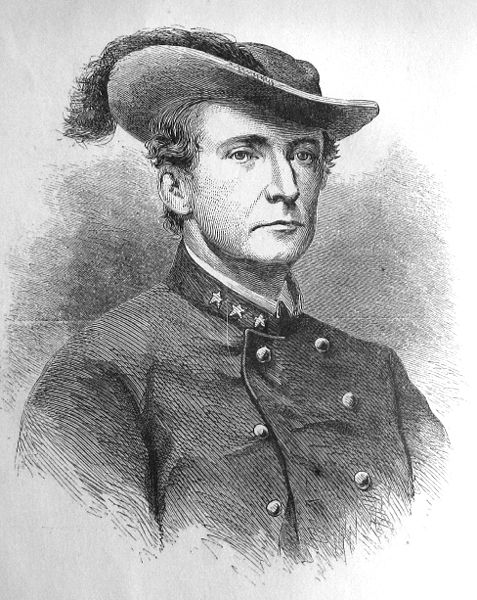43rd Virginia Cavalry Battalion
The 43rd Virginia Cavalry Battalion, also known as Mosby's Rangers, Mosby's Raiders, or Mosby's Men, was a battalion of partisan cavalry in the Confederate Army during the American Civil War. Noted for their lightning strike raids on Union targets and their ability to consistently elude pursuit, the Rangers disrupted Union communications and supply lines.
Col. John S. Mosby, wood engraving 1867
Sergeant William T. Biedler, 16 years old, of Company C, Mosby's Virginia Cavalry Regiment with flintlock musket. From the Library of Congress Prints and Photographs Division
Private Lucien Love of Co. D, 43rd Virginia Cavalry Battalion
Confederate Cavalry Colonel John S. Mosby and some of his men-Top row (Left to Right): H. Lee Howison, W. Ben Palmer, John W. Puryear, Tom Booker, Alexander G. Babcock, Norman V. Randolph, Frank Rahm Second row: Robert B. Parrot, Thomas Throop, John W. Munson, John S. Mosby, Rat Noel, Charles H. QuarlesThird row: Walter W. Gosden, Henry T. Sinnott, Otho L. Butler, Issac A. Gentry
John Singleton Mosby, also known by his nickname "Gray Ghost", was an American military officer who was a Confederate army cavalry battalion commander in the American Civil War. His command, the 43rd Battalion, Virginia Cavalry, known as Mosby's Rangers or Mosby's Raiders, was a partisan ranger unit noted for its lightning-quick raids and its ability to elude Union Army pursuers and disappear, blending in with local farmers and townsmen. The area of northern central Virginia in which Mosby operated with impunity became known as Mosby's Confederacy.
Mosby during the 1860s
Mosby during the American Civil War
Mosby in the early 1860s
Mosby's Rangers. Top row (left to right): Lee Herverson, Ben Palmer, John Puryear, Tom Booker, Norman Randolph, Frank Raham.# Second row: Robert Blanks Parrott, John Troop, John W. Munson, John S. Mosby, Newell, Neely, Quarles.# Third row: Walter Gosden, Harry T. Sinnott, Butler, Gentry.







